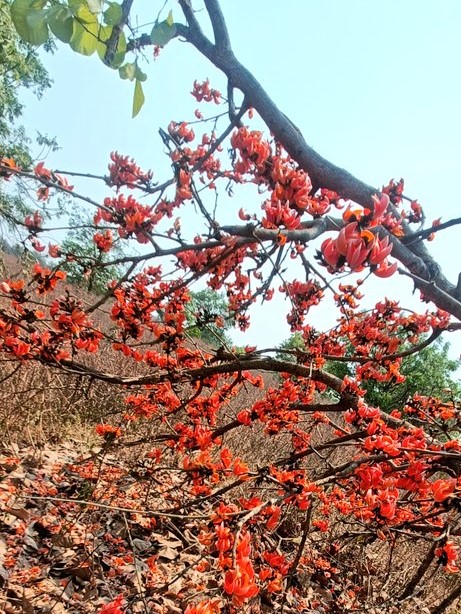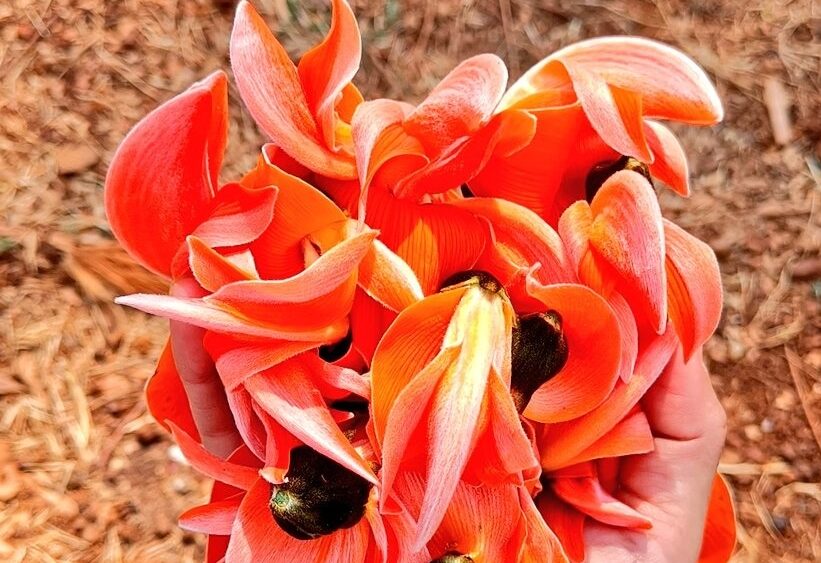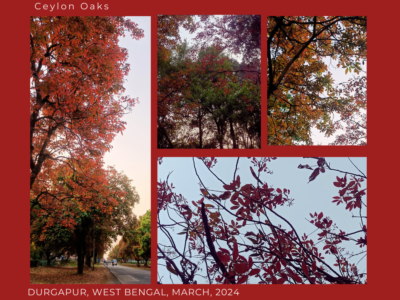Personally, I find the month of March, as nature’s symbolical rendition of poetry — the poetry of spring, writes Jhilam Chattaraj on the occasion of World Poetry Day
In the year 1999, during the 30th General Conference in Paris, UNESCO adopted 21st March as World Poetry Day. The intention was to encourage and preserve linguistic diversity through the most ancient art form; poetry. The day also celebrates poets, of both written and oral traditions. World Poetry Day is a sweet reminder to foster inter-textual connections between poetry and other creative expressions like music, dance, theatre, photography and painting.

The possibilities of poetry have inspired several poets around the globe to create texts that expand the boundaries of the written word. New Delhi-London based poet, Sudeep Sen, now a writer-in-residence at NIROX Sculpture Park, South Africa is much admired for his stunning experiments with poetry and photography. Contrary to the popular opinion on World Poetry Day, Sen states that ‘Poetry is all around us. Poetry should be spoken about and lived every day.’
True, instead of responding with emojis and seminars to only one day, could we not cherish each moment of our lives through the lens of literature?
Personally, I find the month of March, as nature’s symbolical rendition of poetry — the poetry of spring. Spring-flowers embody the central metaphor of life; rebirth and regeneration — through beauty and senses. ‘Palash’ (as known in Baangla) being one of flowers. Palash is identified as the ‘flame of the forest’ in English and ‘Modugu’ in Telugu. The burning crimson flower rises like my life-source; the seed of love, desire and creation. The city silently watches the fall of rocks and trees — Palash cannot bloom amidst injured air. If one looks carefully beyond the fringes of Hyderabad, one will find stretches of orange passion on disappearing, dry verdure. Palash is heavy with nectar; it is a favourite among birds and bees. The delicate curve of Palash, its bright satin softness is a joyful whisper of the glorious season.

Here’s a poem to celebrate the essence of Palash; the enduring value of orange, red, crimson and auburn. A reminder of the essential colour of humanity. No matter how disparate we are through time and space, our primal truths will always belong to air, water, earth and fire.
Palash – the harmony of life
A poet dilates to the dewy
unrest of seasons.
His poems — a lacework of Palash —
vermillion streaks on leafy
foreheads
of lustrous brides of spring.
A stiff-green calyx
holds five petals —
fire on fire — fire keeling to the edge of beauty.
I slip a rush of orange into the sky.
My heart
burns like fireworks, even in rain.
It is the spell of Palash —
lips of the earth,
reduce anger to ash, even in rain.
Cleaved bodies unite within
Palash-mandalaas.
Fingers arch to Palash-mudras —
ebullient, effulgent, ethereal.
Warm flocculence
flush across oceans
to paint rooms that never finish
with red,
to pray at bird-beaked shrines,
to watch the tickle of Palash
on poets
summoning people with elation.
Open doors, open windows,
own the streets —
‘raanga haashi raashi raashi ashok-e palaash-e,’*
Weave each day a tuneful
spectrum —
‘raanga nesha megh-e mesha probhat-o-aakash-e.’*
The boundless soul becomes a scribe,
but words blink
within texts; texts within phones;
skinless, sexless, loveless.
Only Palash
can thaw frozen frontiers,
rise like the harmony of life,
fasten torn navels
to the womb of a fervent dream —
an equal earth beyond the measure
of the compass.
A tree, writing Palash, like love letters
to miles and miles
of red, orange, red —
as if red were our only geography.
’O Re Griho Baashi,’ by Rabindranath Tagore. The song celebrates the festival of Holi or Dol-jaatra as known in West Bengal.
















